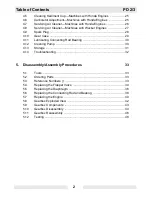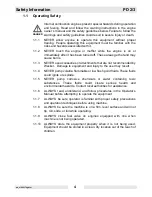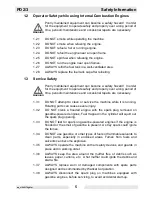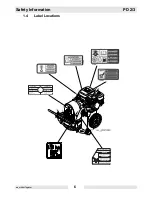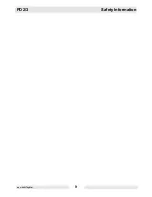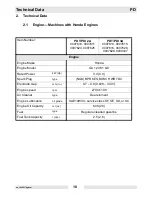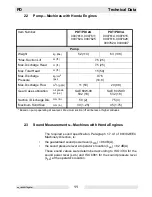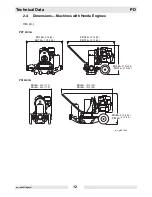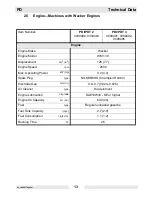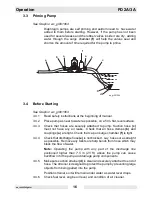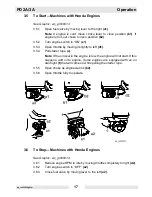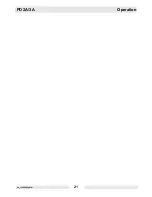
Operation
PD 2A/3A
wc_tx000592gb.fm
16
3.3
Priming Pump
See Graphic: wc_gr001064
Diaphragm pumps are self priming and seldom need to have water
added to them before starting. However, if the pump has not been
used for several weeks and the rubber valves inside it are dry, adding
water through the surge chamber (f) will help the valves seal and
shorten the amount of time required for the pump to prime.
3.4
Before Starting
See Graphic: wc_gr001064
3.4.1
Read safety instructions at the beginning of manual.
3.4.2
Place pump as near to water as possible, on a firm, flat, level surface.
3.4.3
Check that hoses are securely attached to pump. Suction hose (c)
must not have any air leaks. Check that all hose clamps (b) and
couplings (a) are tight. Check that cap on surge chamber (f) is tight.
3.4.4
Check that discharge hose (e) is not blocked. Lay hose out as straight
as possible. Remove any twists or sharp bends from hose which may
block the flow of water.
Note: Operating the pump with any part of the discharge line
positioned higher than 7.5 m (25 ft.) above the pump can cause
backflow into the pump and damage pump components.
3.4.5
Make sure suction strainer (d) is clean and securely attached to end of
hose. The strainer is designed to protect the pump by preventing large
objects from being pulled into the pump.
Position strainer so it will remain under water as water level drops.
3.4.6
Check fuel level, engine oil level, and condition of air cleaner.
w c _ g r 0 0 1 0 6 4
e
b
a
f
a
b
c
b
d
Summary of Contents for PDI 2
Page 2: ......
Page 13: ...PD 2 3 Safety Information wc_si000176gb fm 9 ...
Page 25: ...PD 2A 3A Operation wc_tx000592gb fm 21 ...
Page 45: ...PD Repair Disassembly Assembly Procedures wc_tx000590gb fm 41 wc_gr003460 a c f b e d a g g ...
Page 53: ...PD Repair Disassembly Assembly Procedures wc_tx000590gb fm 49 wc_gr003465 wc_gr003464 ...
Page 54: ...Disassembly Assembly Procedures PD Repair wc_tx000590gb fm 50 ...
Page 59: ......

